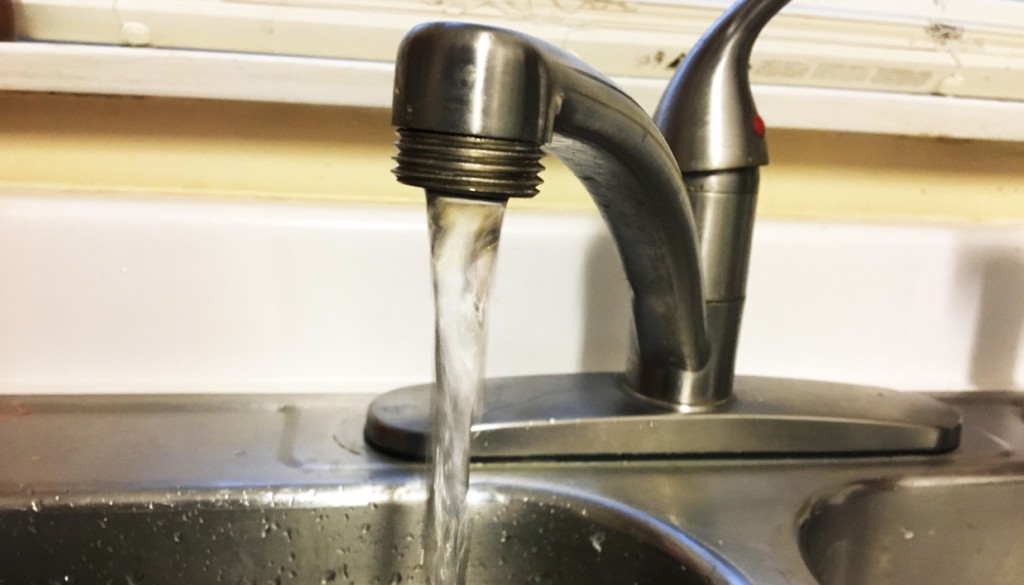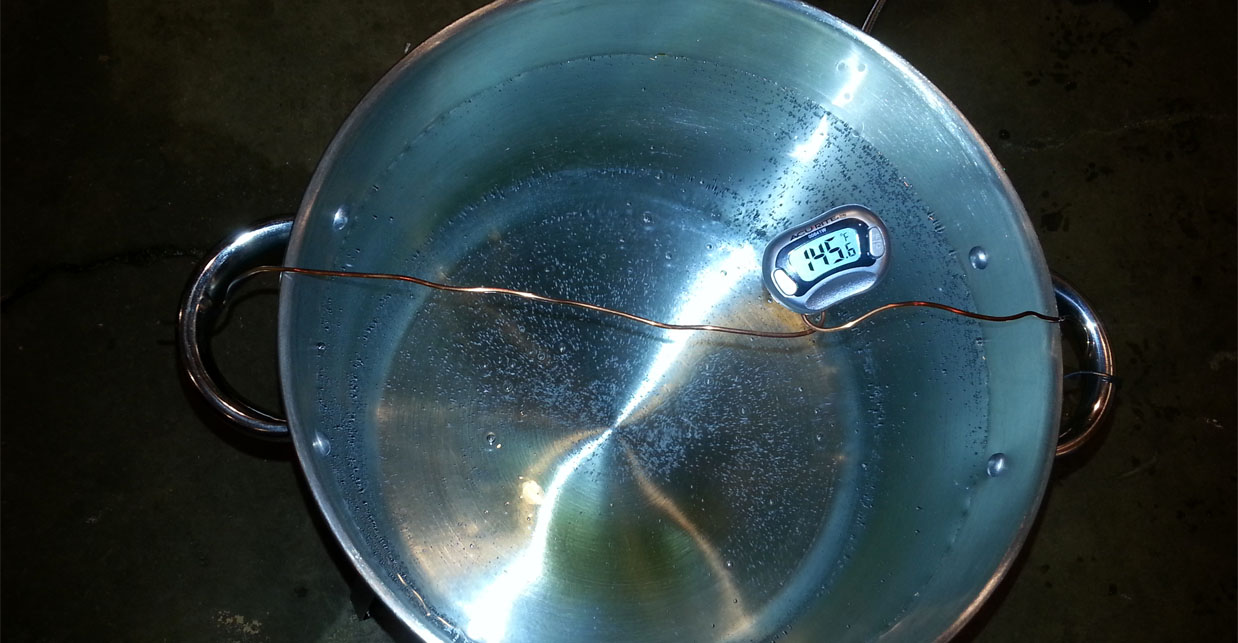Brewing Water Basics Part 2
Sunday, November 19th, 2017
This article is a continuation of a three-part series. Check out part one here.
You may have heard that you have “hard” water, or “soft” water. Hardness in water is mostly due to the calcium and magnesium ions in the water. A low concentration of these is said to provide soft water, while high concentrations produce hard water. The hardness of your water varies regionally. In the Midwest the water tends to be hard, while in places like southern California and other coastal areas, the water tends to be soft. Neither type of water is inherently poorly suited to brewing, and both can be used successfully. In most cases, moderately hard water is ideal due to the need or desire for some calcium in the brewing water.
The hardness of your water is balanced by the alkalinity of the water. This is in the form of bicarbonates. Alkaline water is high in bicarbonates. In your water report, you should see “hardness as CaC03” in parts per million (ppm) or “alkalinity as CaC03” in ppm. The key to using your water is to determine its alkalinity and taking steps to provide the proper amount so that you can obtain a proper mash pH. The make up of the sparge water is important as well, and this should be kept in mind.
The pH of your starting water does not impact the mash pH as much as you would think. That is due to the buffering capacity of the water (the alkalinity) and the more acidic grains. Once the water is combined with the grains in your recipe, the mash pH will be determined. The mash pH is the important part of this—it determines many of the qualities of your beer (flavor, color, clarity) and is a factor in enzyme activity. These enzymes are what go to work to convert the starch in the malted grain to fermentable sugars. Providing a mash pH of 5.2-5.7 favors their activity, although the enzymes will work outside of that range. Narrowing the target mash pH to 5.3-5.5 will help to optimize the enzymes, and also enhance flavor. A higher pH will increase harshness in the finished beer, extracting more tannins and also increase the isomerization of hop oils so that the beer can come across as rough or coarse. To be clear, when we are discussing the pH during mashing, we are talking about the readings taken at room temperature. To check the pH, a very small sample (even a shot glass size) can be taken from the mash, cooled in an ice/water bath, and then checked when the sample is at 68-75 degrees. PH readings vary from mash temperatures to room temperatures, and any pH readings are always provided at room temperature. This also will help preserve the life of the probe on the pH meter. A good quality pH meter can be found for +/- $100 or so, and is highly recommended. There are pH strips available in the 5-6 pH range, but their accuracy is questionable and they can be very hard to read, especially with dark wort.
Sparge water should be acidified to have a pH of less than 6, to avoid tannin extraction as the gravity of the wort drops. Alternatively, water with minimal alkalinity can be used such as distilled or reverse osmosis water for this. Sparging with alkaline water can cause some harsh flavors as well as a puckering dryness in the finish.
Dealing with Alkalinity:
For some of us, the biggest challenge is dealing with high alkalinity in the water. For a moderate amount of alkalinity, some acid in the mash and sparge water can be an easy fix. For those with high alkalinity, there are options such as pre-boiling the water and racking off of the precipitate, lime softening, dilution with distilled water, or even installing a reverse osmosis system in your home to deal with this. Our article will discuss adding some acids to our brewing water to optimize the mash pH and sparge water alkalinity, and diluting your own water with distilled or reverse osmosis water.
For further information on reducing alkalinity with lime, please see: https://braukaiser.com/wiki/index.php?title=Alkalinity_reduction_with_slaked_lime . The technique is easy, but far beyond the scope of this article. This works well for brewers with good but alkaline water, and is worth considering as it is inexpensive.
One of the easiest ways to estimate your probable mash pH is with a brewing water spreadsheet. There are several available online, and in some brewing software programs you may already have. We recommend the Advanced Water Calculator at Brewer’s Friend here: https://www.brewersfriend.com/?p=2959&preview=true . Each calculator may differ some in the algorithms they use, but most are fairly similar. With your water report in hand (or using the default for reverse osmosis water if that is your supply), you enter the values into the software where indicated, along with the volume of water you are starting with and the batch size. The volume of water you may start with may be a gallon or two more than your batch size, due to boil off and grain absorption and there will be a box for this. Using the recipe input portion, you add the amounts of the grains you are using in the current batch. The spreadsheets will then give you a projected estimate of the mash pH. The water calculator in Brewer’s Friend is easy to use with a very small learning curve.
You will notice that almost all of the mash pH projections for light to amber colored beers will be higher than desired. That is where the acid additions come in. The acids of choice for brewers are lactic acid and phosphoric acid in the US and often CRS in the UK. There are others available, but many (such as citric acid) may have an undesirable flavor impact so lactic acid and phosphoric acid are more widely used in the US. Lactic acid may have a flavor impact in large amounts as well, so if you have more than moderately alkaline water you may wish to use phosphoric acid which is more flavor neutral. Make sure to look at the strength of your acid. Lactic acid usually comes in 88%, while phosphoric acid can be 10% or 88%. The spreadsheets have a place to add the acid of choice (with the strength) on them, and then recalculate the mash pH of your batch.
Since the grains have a natural acid content, when mixed with water the pH of the mash will naturally drop. Dark roasted grains are more acidic than pale grains, and will drive the mash pH lower without adding acid to the mash. Unless you are brewing a very dark beer, many water supplies will require some acid however, and pale beers most of all. Using a soft water with low alkalinity is a key to success with beers such as pilsners because of this, while brewing a stout will require some alkalinity to balance the acidic grains. That is where the spreadsheets can be helpful, so that the acid content of the grains is estimated and then balanced against the alkalinity of the water. Target a mash pH of 5.2-5.7, ideally 5.3-5.5, for best results. Don’t forget that readings are always done at room temperature. It is highly recommended to do a test mash- that is, a very small batch of the recipe you are using, with the same volume of water per ounce of grain, and to check the pH. You will then know how the entire volume will react, and can make adjustments to your acid additions as needed when making the batch.
In rare cases, it may be necessary to add alkalinity to your water. For example, if you are starting with soft water with low alkalinity, the darker grains used in a porter or stout may drive your pH too low. Unless you have naturally high sodium in your water, baking soda is the addition of choice. Calcium carbonate (chalk) has been used routinely in brewing, but because of its limited solubility, it does not dissolve well in the mash unless extraneous measures are taken, and should be avoided.

It is also important to treat the sparge water if you have alkaline water. If you adjust your sparge water to have a pH of 5.5-6, and avoid any additions of alkalinity like baking soda, you should be all set. Many brewers will choose to sparge with 100% distilled or reverse osmosis (RO) water in lieu of acidifying the water, and that works well. To acidify the sparging water, lactic acid or phosphoric acid can be used. Often, this is very little acid especially if you are using 88% lactic acid so a pipette or dropper is very helpful. To avoid flavor impacts, using phosphoric acid is recommended if more than 5 ml of lactic acid in 5 gallons of water is required for the necessary pH drop. If you do not have a pH meter, the sparge water tool in the brewing water spreadsheets can be used.
To check the mash pH, a small sample of the mash can be taken out and cooled to room temperature (72-75 degrees or so) and the reading taken with a freshly calibrated pH meter. A small shot glass cooled in an ice batch works well for this. The pH of the mash does change as the mash proceeds, however slight, and so the first reading should be taken within about 10 minutes of mashing in. If it is fairly close to the projected desired pH, it should be left and notes taken for next time as chasing pH can be futile if adding acid and then alkalinity to try to hit the target. If the mash pH is wildly off from the projected pH, a new reading should be taken before attempting any fix.
For many brewers, mash pH adjustments may seem overwhelming, at least at first, so further reading is recommended. This article attempts to break water chemistry down into the simplest methods and this is a very complex subject.
If all of this still seems very difficult at first, one of the quick and easy ways to get a likely acceptable mash pH is to start with 100% reverse osmosis (RO) water and add a bit of lactic acid or acidulated malt to it. That will be appropriate for most light/pale beers, although not as precise as targeting a mash pH with the water additions and grist in the recipe. Using RO water for the mash and sparging water, and using acidulated malt in the amount of 1-2% of the grainbill (usually 2-4 ounces in an 11 pound 5 gallon batch) will often get you quite close. For a stout or other beer recipe with 1# of dark roasted grain like roasted barley or black malt, leave out the acidulated malt. This should result in an acceptable end product without worry.
We will talk about more specific steps to make water chemistry easier for you in the next article of our series.







Sorry, comments for this entry are closed at this time.